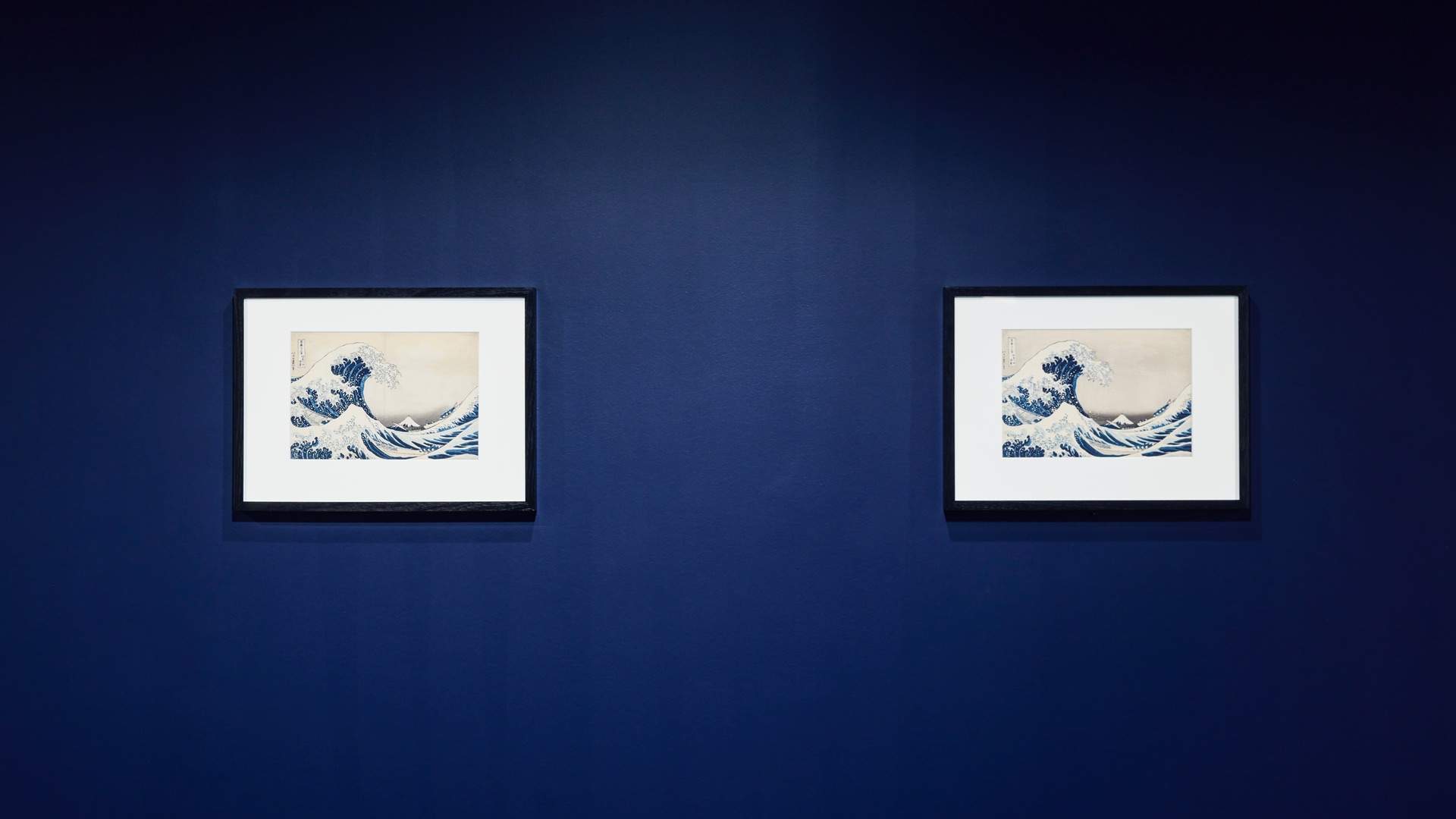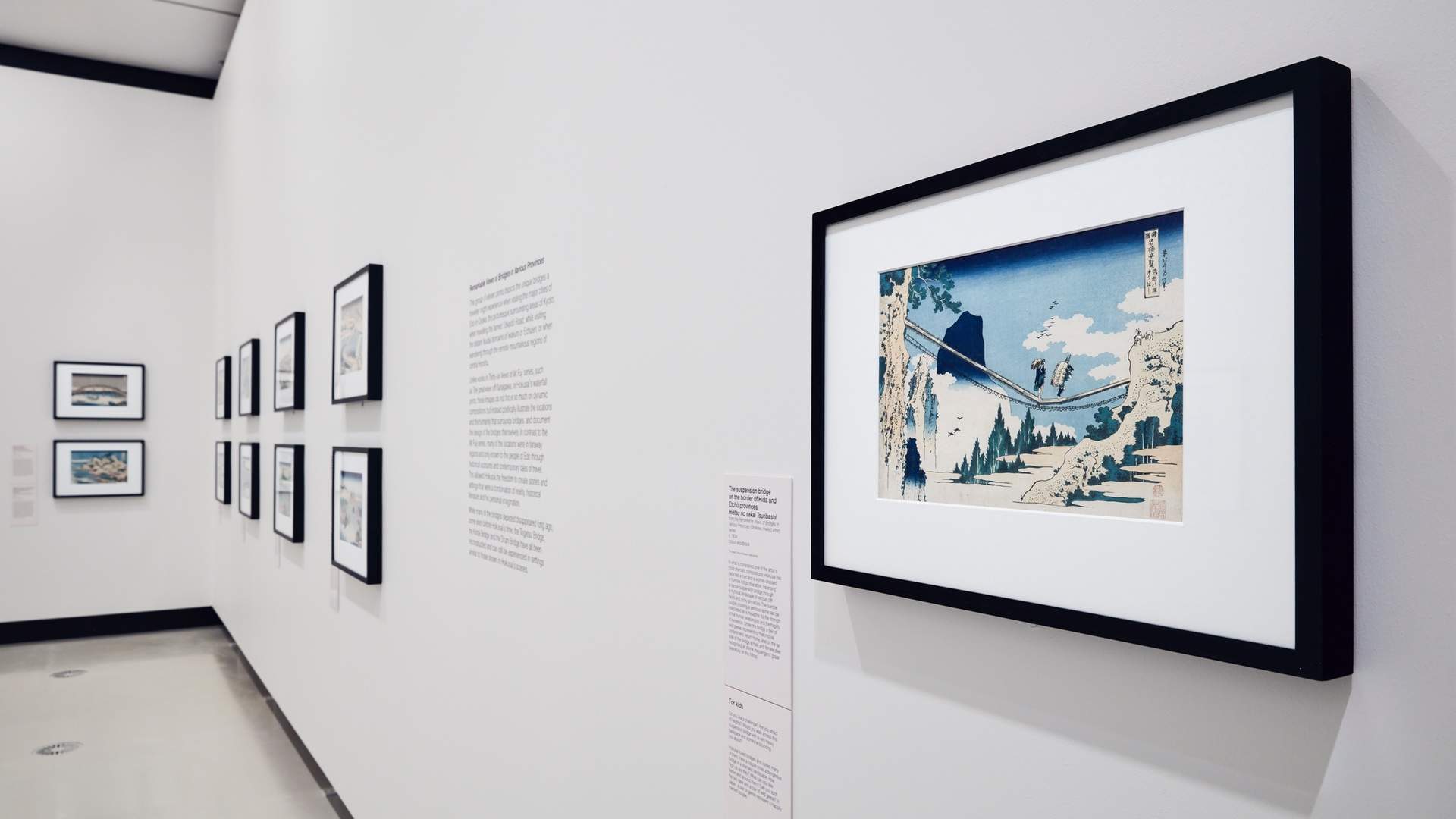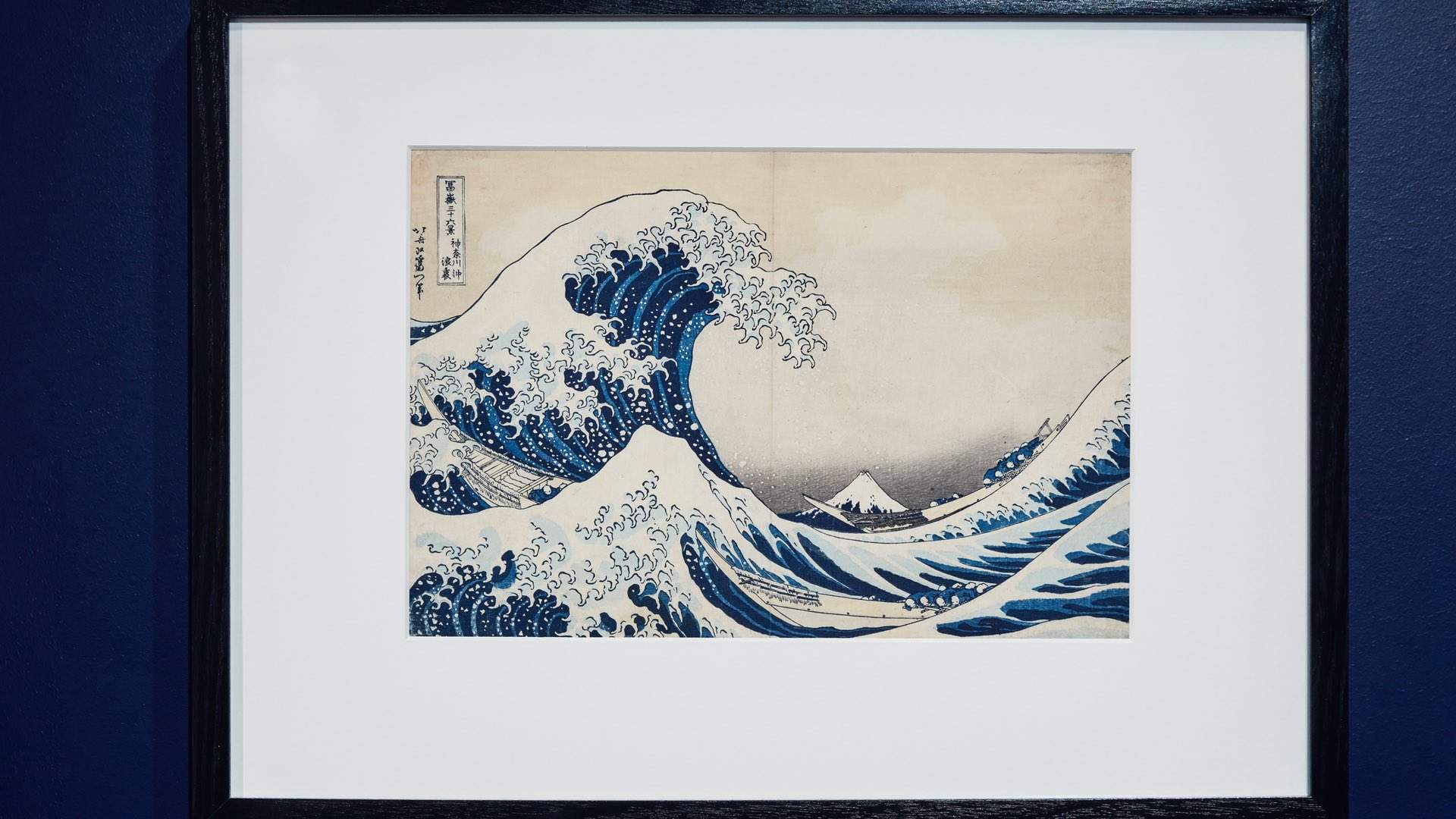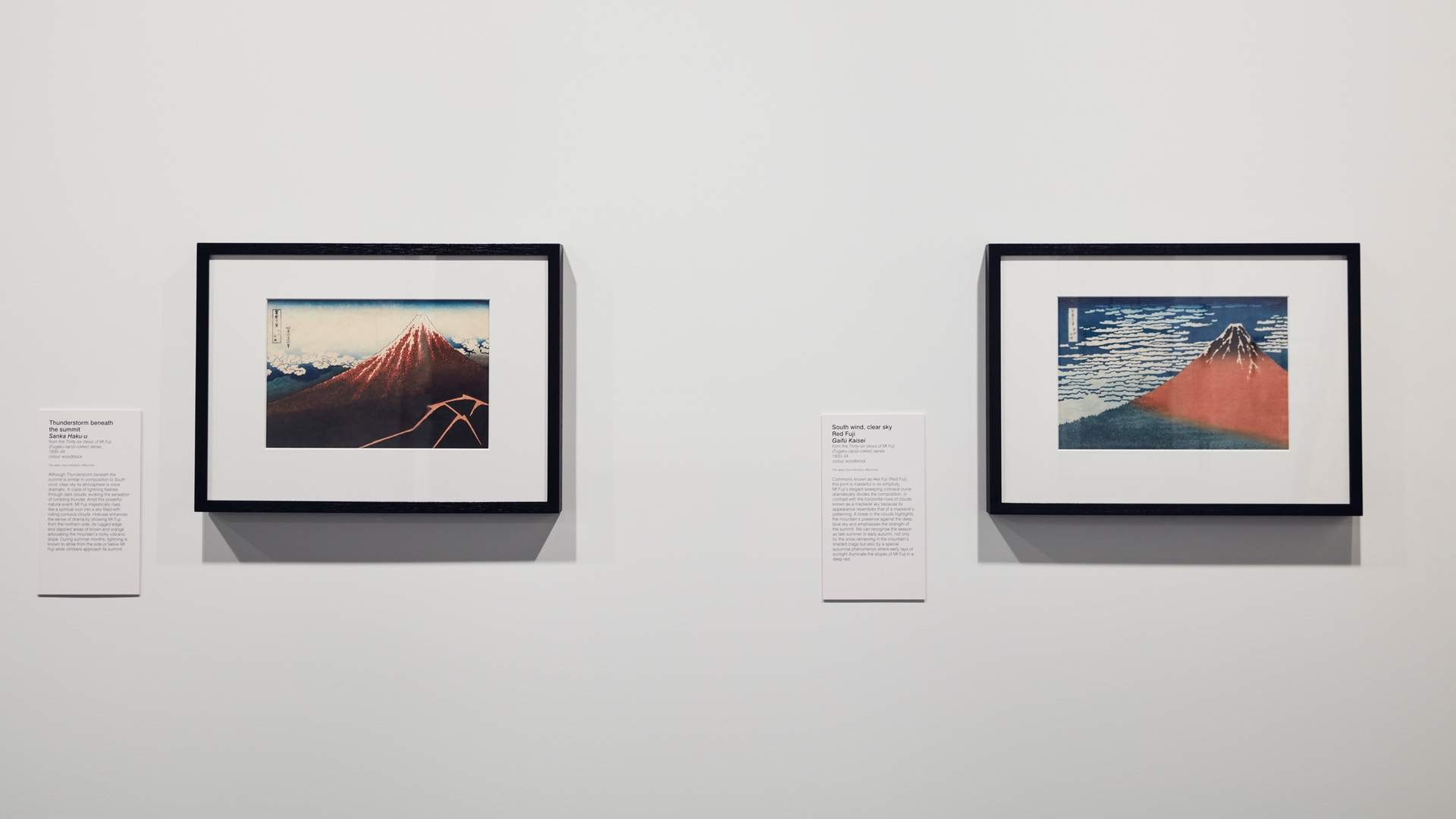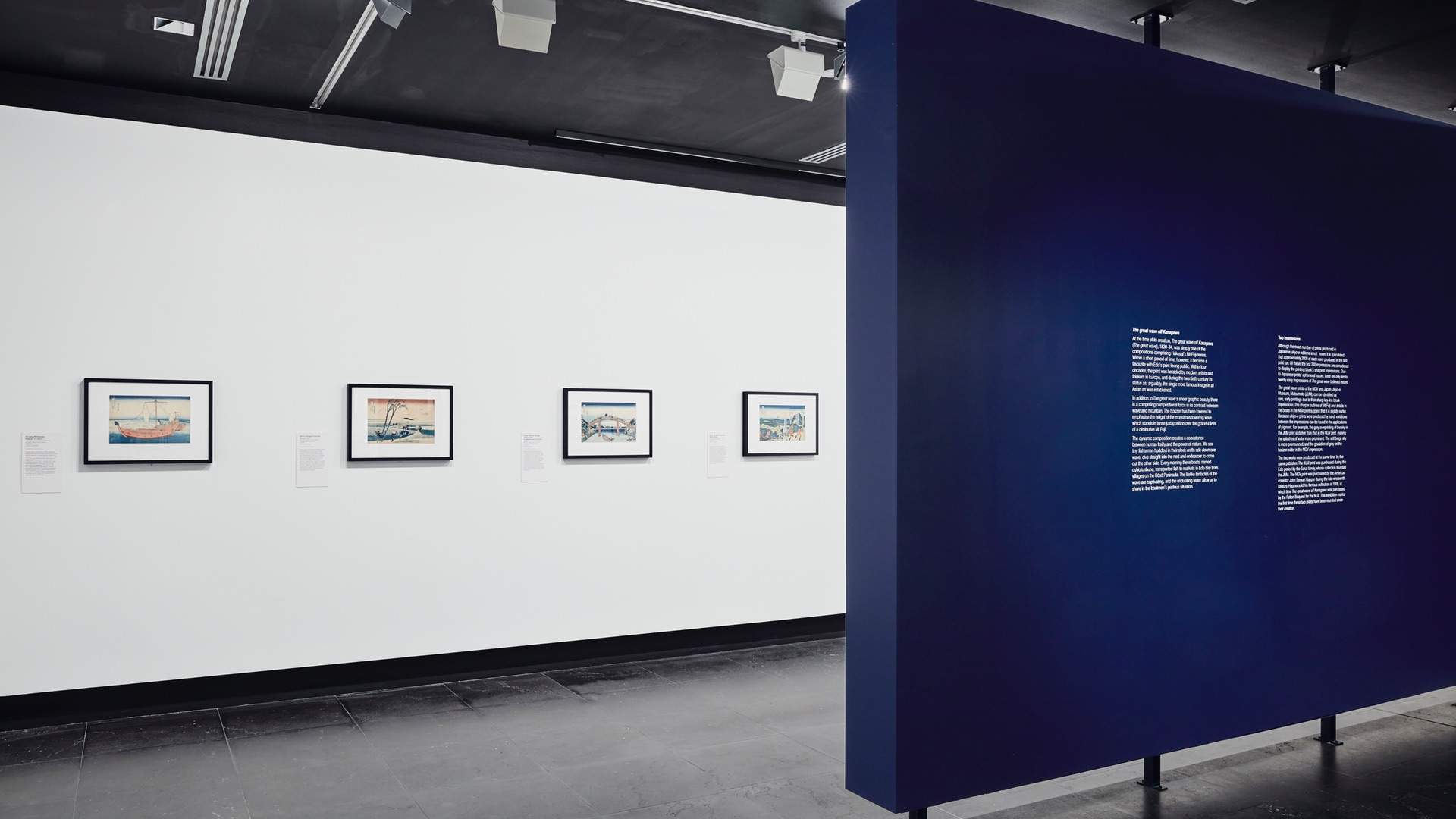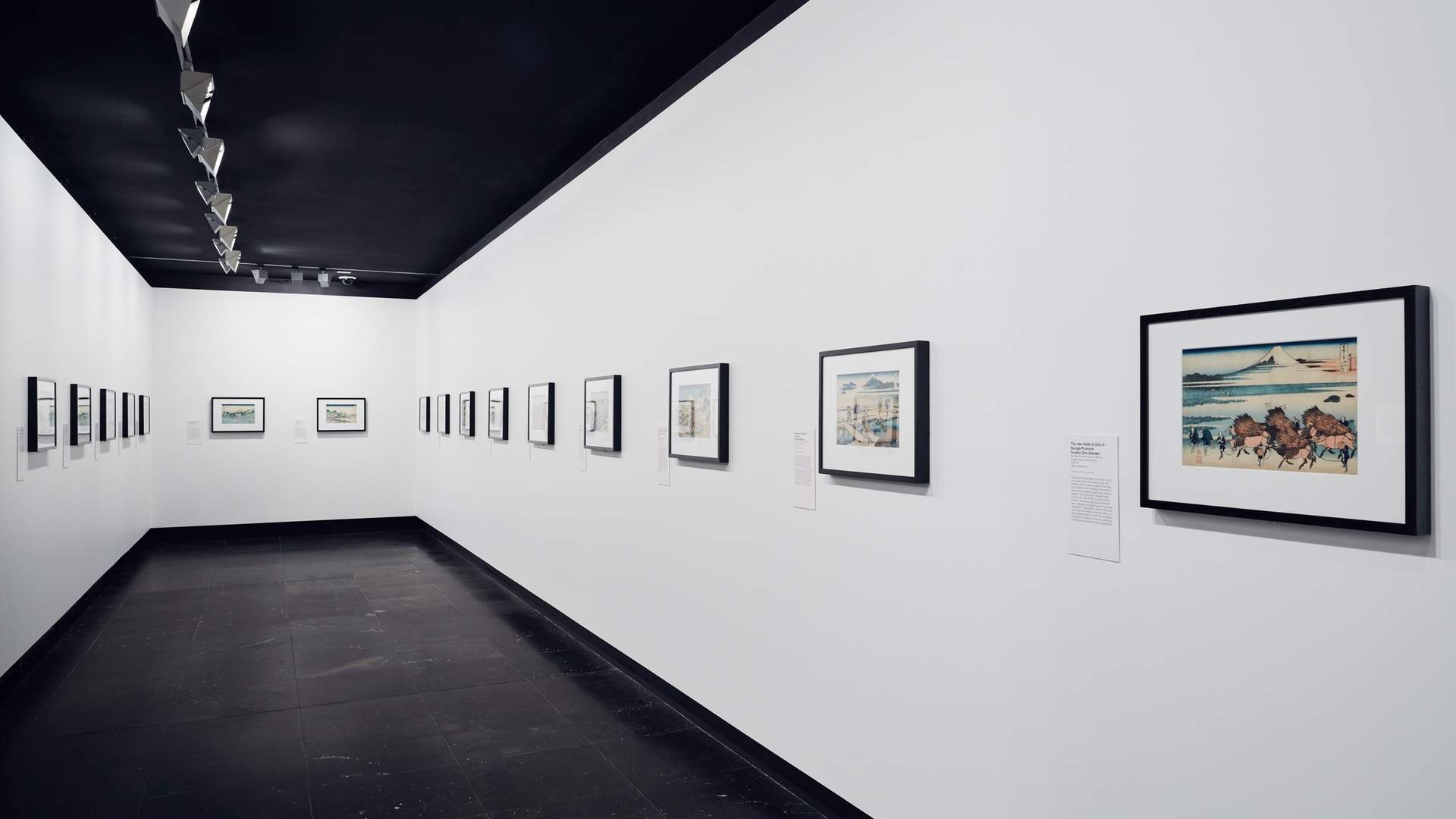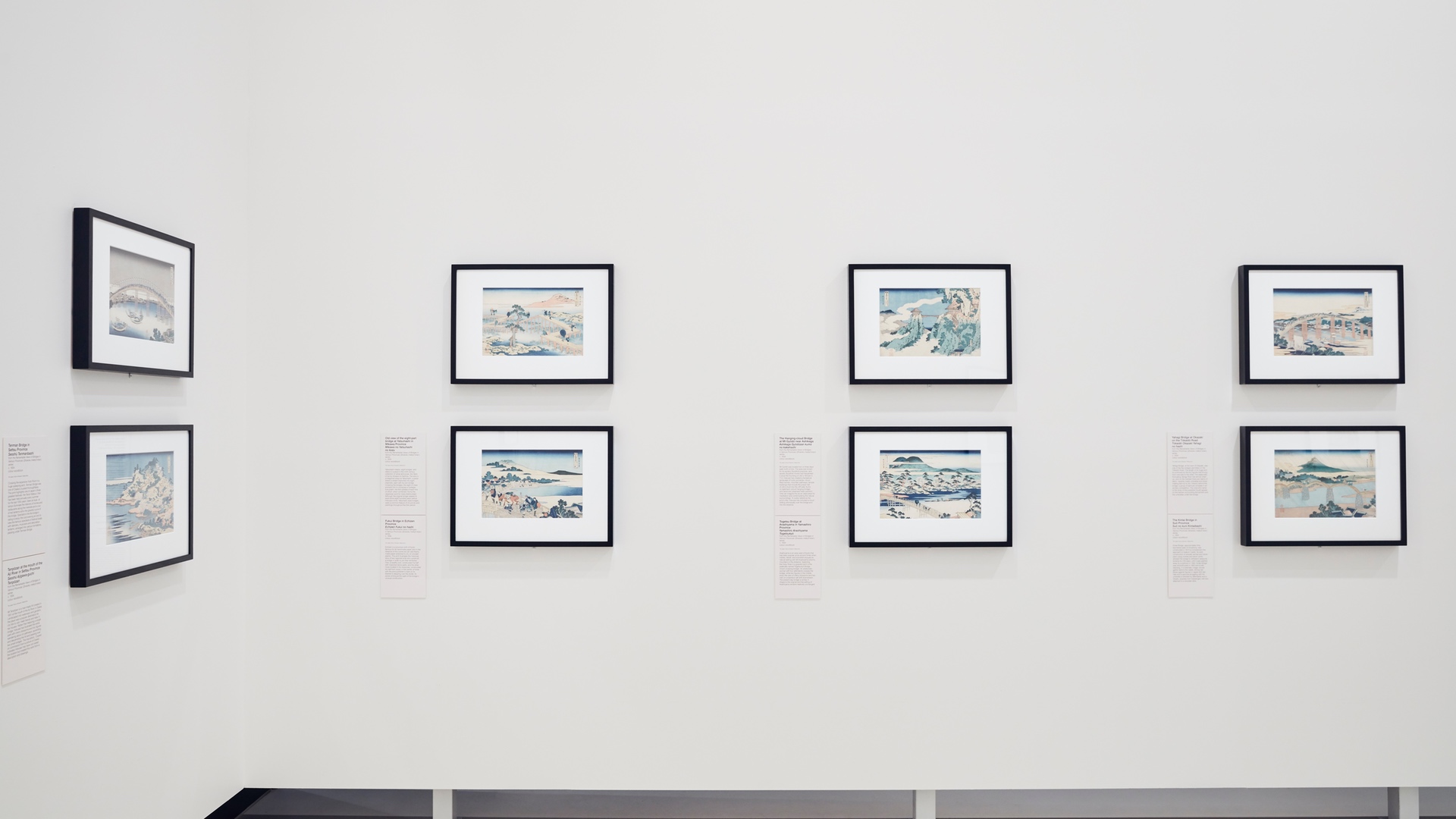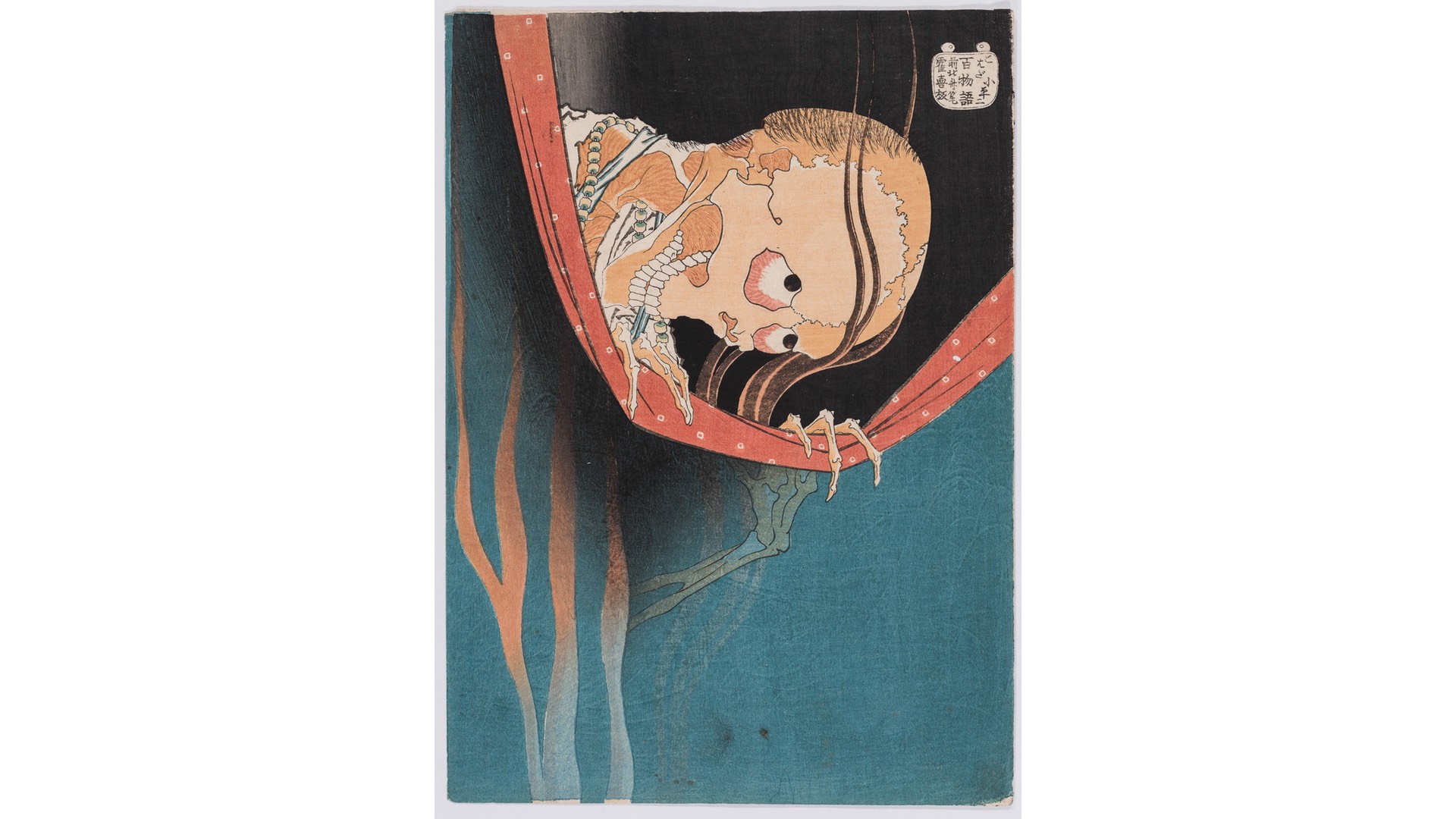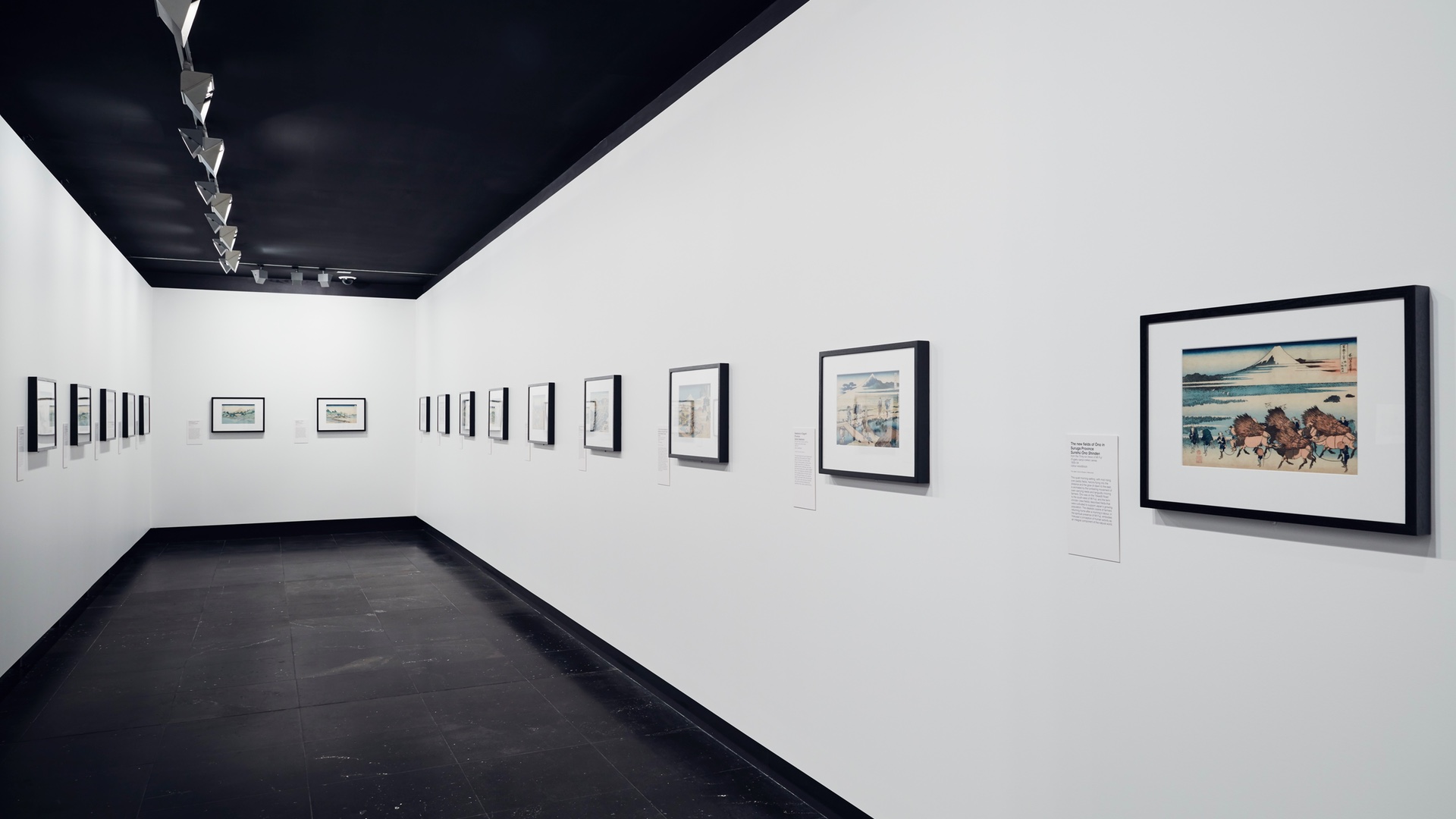A Look Inside the NGV's Massive New Katsushika Hokusai Exhibition
Peep into the largest ever showcase of Hokusai's work seen in Australia and find out which of the 150 works can't be missed.
Wintertime is gallery time in Melbourne, so it's no surprise the NGV took a go-big-or-go-home attitude to follow up their extended Van Gogh and the Seasons exhibition. Thankfully, they haven't disappointed with a huge display of the works of Katsushika Hokusai.
Running until October 15, the Hokusai exhibition is the largest single assemblage of the artist's work ever to be seen in Australia. More than 150 of his works are on display – including his five career-defining series of woodblock prints, the complete 15 editions of handprinted manga, plus silk works and rarely exhibited paintings.
To make the exhibition a reality, NGV curator of Asian art Wayne Crothers worked closely with the Japan Ukiyo-e Museum (JUM), a privately owned gallery and one of the world's largest collectors of Japanese woodblock prints. Crothers says this relationship allowed the NGV to showcase the "highest quality examples" of Hokusai's work available.
On entering Hokusai, you'll get to know the artist from works from his early career before coming to his universally acclaimed Thirty-six Views of Mt Fuji series. Created during Hokusai's own circumvention of Mt Fuji and his eventual summit, this series is the best instance of Hokusai's uncanny ability to depict everyday Japanese life and the population's closeness to nature.
Next up is the unmistakable centrepiece — The Great Wave off Kanagawa — while across the gallery threshold is A Tour to the Waterfalls in Various Provinces, which rests against a distinctly 'Hokusaian' Prussian blue backdrop. Here, the gallery splinters into various spaces dedicated to his many manga volumes, and other lesser-known (but equally as impressive) works.
While we're fortunate enough to be able to see many of Hokusai's headline artworks for the first time in Australia, Crothers explains the artist's most famous works are only the beginning to this exhibition: "One of the things we wanted to show through this exhibition was for everyone to enjoy 'The Wave', but then move beyond it and to experience the imagination in Hokusai's other creative projects."
Here, with the help of Crothers' nuanced insight, we've selected five great works (aside from The Great Wave) from the Hokusai collection that you can't possibly miss.
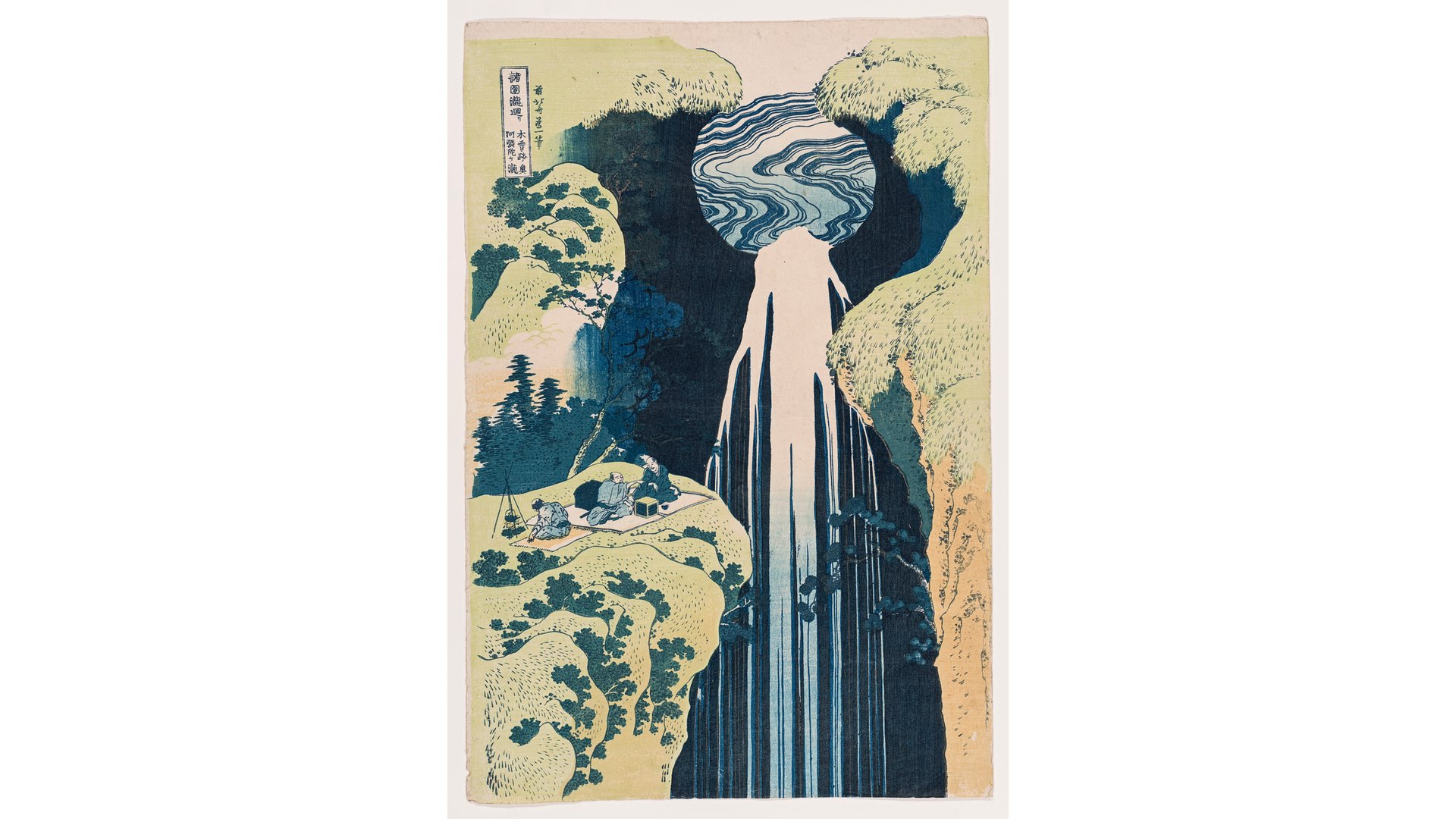
The Amida Falls in the far reaches of the Kisokaidō Road, courtesy of The Japan Ukiyo-e Museum, Matsumoto.
THE AMIDA WATERFALL ON THE KISO ROCK, A TOUR TO THE WATERFALLS IN VARIOUS PROVINCES, (C. 1832-1833)
The Waterfalls series represents some of the most experimental and creative works Hokusai produced at any time throughout his career. A stunning design piece, The Amida Waterfall on the Kiso Road shows an overhead view of flowing water, before halfway down the work changing perspective to a right-angled illustration of a waterfall.
VIEW OF THE PONTOON BRIDGE AT SANO IN KOZUKE, REMARKABLE VIEWS OF BRIDGES IN VARIOUS PROVINCES (1830)
One of Crothers' favourite works of the exhibition, this piece captures the beautiful Japanese winter landscapes, while the travellers trudge across the snow covered pontoon in silence. Throughout this series, Hokusai illustrates the changing of the seasons across diverse locations and depicts the lives of working class Japanese people during this period.
100 GHOST STORIES (1831)
Based upon numerous well-known Japanese supernatural tales, the Ghost Stories series is Hokusai's surreal interpretation of these stories. Taking a satirical and humorous approach, for this woodblock print series Hokusai took one small detail from each popular fable and crafted caricatures, which mocked government corruption, societal wrongs and other common issues during this era. An immaculate collection, Crothers says these prints best demonstrate Hokusai's "vivid imagination".
CLIMBING THE MOUNTAIN, THIRTY-SIX VIEWS OF MT FUJI (C. 1830-1833)
While you might assume Thirty-six Views of Mt Fuji has 36 accompanying prints, in fact, the series was so popular that Hokusai created an additional ten prints (although the original title was kept). Described by Crothers as the perfect 'final gesture', this 46th print depicts a group near Mt Fuji's summit, which was said to hold the key to immortality — a topic Hokusai often showed interest in.
REFLECTION IN LAKE AT MISAKA IN KAI PROVINCE, THIRTY-SIX VIEWS OF MT FUJI (C. 1830-1833)
Depicting a peaceful reflection of the summertime summit of Mt Fuji in its lush landscape, this woodblock print is another from the subsequent ten prints to the original series. Hokusai is known for including many subtle details and references throughout his work, and on closer inspection of this piece, you'll notice the distinctly summer time Mt Fuji shows off its wintery side in the lake's reflection.
Hokusai is now showing at NGV International.
